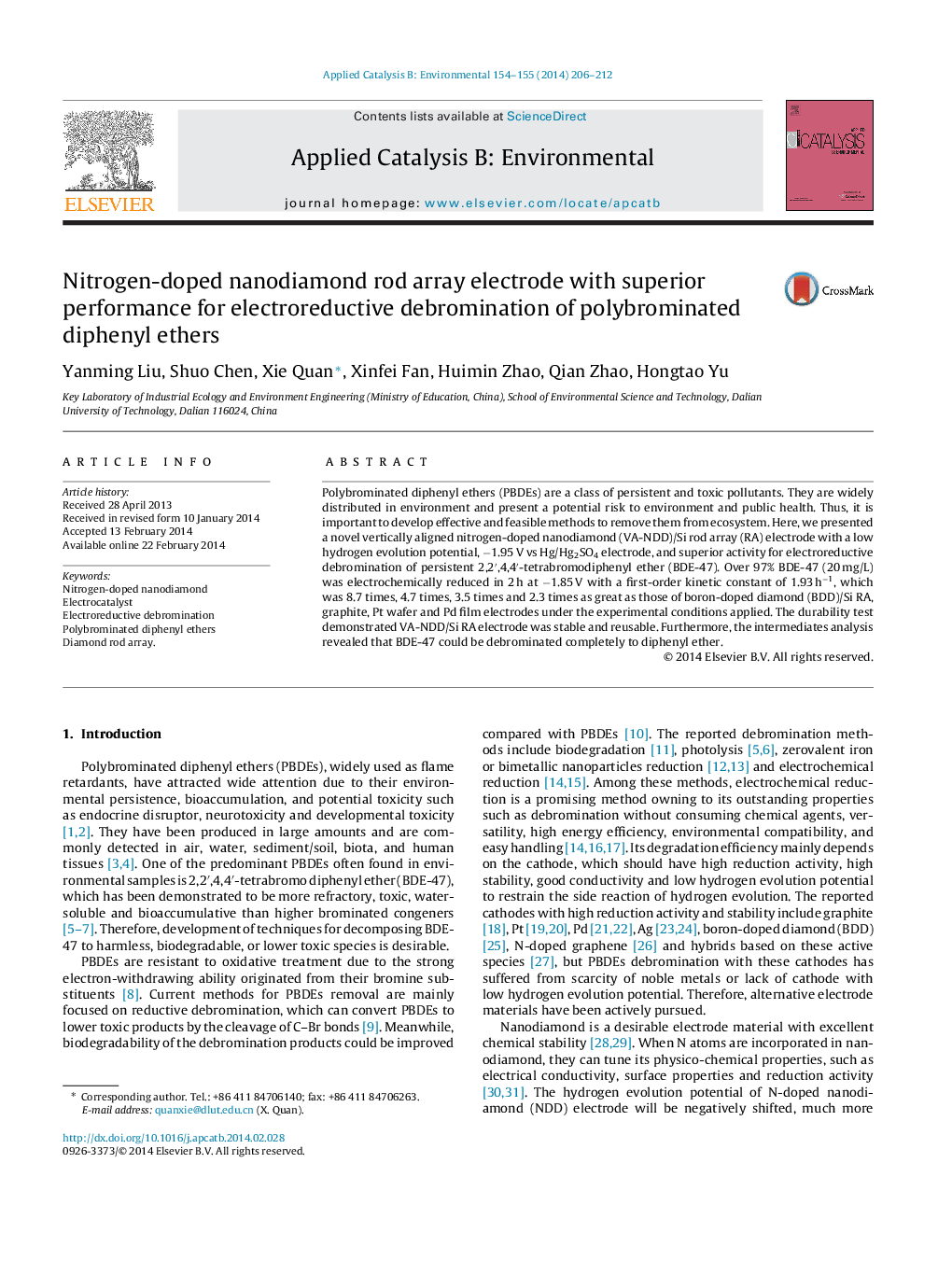| Article ID | Journal | Published Year | Pages | File Type |
|---|---|---|---|---|
| 45056 | Applied Catalysis B: Environmental | 2014 | 7 Pages |
•Nitrogen-doped nanodiamond rod array (NDD RA) electrode was successfully synthesized.•NDD RA exhibits low hydrogen evolution potential and high electrochemical reduction activity.•NDD RA shows faster kinetics for BDE-47 reduction than graphite, Pt wafer and Pd film.•The electrochemical activity of NDD RA electrode can be tuned by nitrogen contents.•BDE-47 can be debrominated completely to diphenyl ether by NDD RA electrode.
Polybrominated diphenyl ethers (PBDEs) are a class of persistent and toxic pollutants. They are widely distributed in environment and present a potential risk to environment and public health. Thus, it is important to develop effective and feasible methods to remove them from ecosystem. Here, we presented a novel vertically aligned nitrogen-doped nanodiamond (VA-NDD)/Si rod array (RA) electrode with a low hydrogen evolution potential, −1.95 V vs Hg/Hg2SO4 electrode, and superior activity for electroreductive debromination of persistent 2,2′,4,4′-tetrabromodiphenyl ether (BDE-47). Over 97% BDE-47 (20 mg/L) was electrochemically reduced in 2 h at −1.85 V with a first-order kinetic constant of 1.93 h−1, which was 8.7 times, 4.7 times, 3.5 times and 2.3 times as great as those of boron-doped diamond (BDD)/Si RA, graphite, Pt wafer and Pd film electrodes under the experimental conditions applied. The durability test demonstrated VA-NDD/Si RA electrode was stable and reusable. Furthermore, the intermediates analysis revealed that BDE-47 could be debrominated completely to diphenyl ether.
Graphical abstractFigure optionsDownload full-size imageDownload as PowerPoint slide
